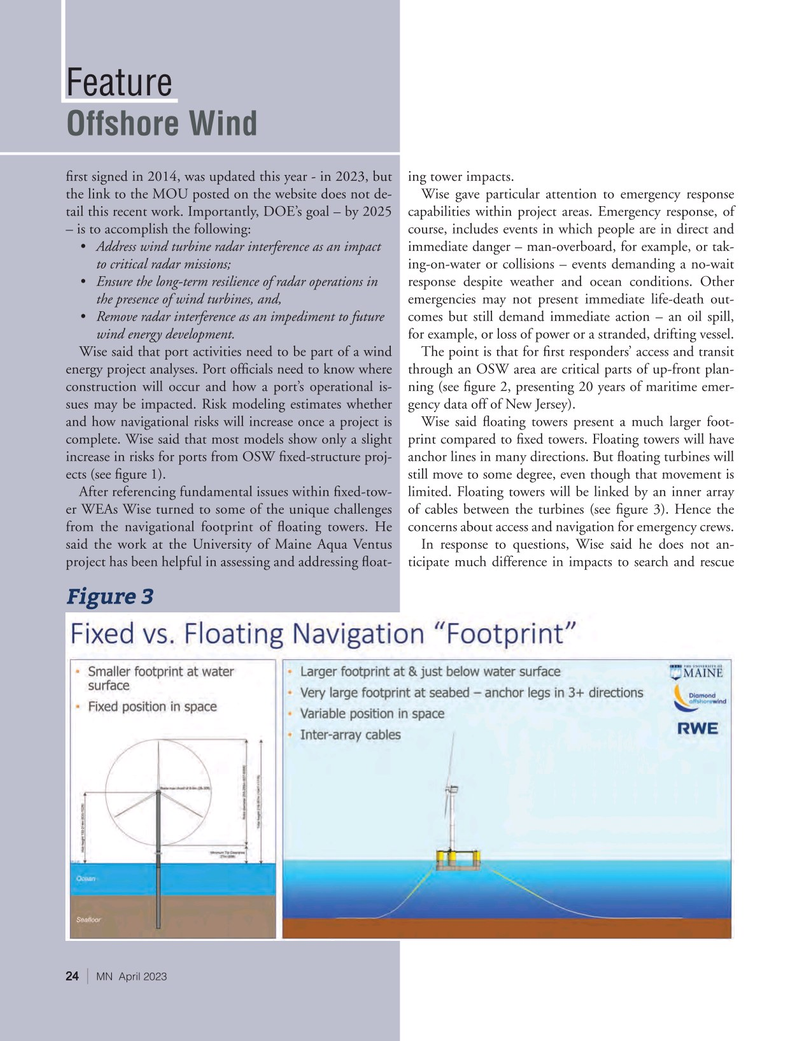
Page 24: of Marine News Magazine (April 2023)
Towboats, Tugs & Barges
Read this page in Pdf, Flash or Html5 edition of April 2023 Marine News Magazine
Feature
Offshore Wind ? rst signed in 2014, was updated this year - in 2023, but ing tower impacts.
the link to the MOU posted on the website does not de- Wise gave particular attention to emergency response tail this recent work. Importantly, DOE’s goal – by 2025 capabilities within project areas. Emergency response, of – is to accomplish the following: course, includes events in which people are in direct and • Address wind turbine radar interference as an impact immediate danger – man-overboard, for example, or tak- to critical radar missions; ing-on-water or collisions – events demanding a no-wait • Ensure the long-term resilience of radar operations in response despite weather and ocean conditions. Other the presence of wind turbines, and, emergencies may not present immediate life-death out- • Remove radar interference as an impediment to future comes but still demand immediate action – an oil spill, wind energy development. for example, or loss of power or a stranded, drifting vessel.
Wise said that port activities need to be part of a wind The point is that for ? rst responders’ access and transit energy project analyses. Port of? cials need to know where through an OSW area are critical parts of up-front plan- construction will occur and how a port’s operational is- ning (see ? gure 2, presenting 20 years of maritime emer- sues may be impacted. Risk modeling estimates whether gency data off of New Jersey).
and how navigational risks will increase once a project is Wise said ? oating towers present a much larger foot- complete. Wise said that most models show only a slight print compared to ? xed towers. Floating towers will have increase in risks for ports from OSW ? xed-structure proj- anchor lines in many directions. But ? oating turbines will ects (see ? gure 1). still move to some degree, even though that movement is
After referencing fundamental issues within ? xed-tow- limited. Floating towers will be linked by an inner array er WEAs Wise turned to some of the unique challenges of cables between the turbines (see ? gure 3). Hence the from the navigational footprint of ? oating towers. He concerns about access and navigation for emergency crews.
said the work at the University of Maine Aqua Ventus In response to questions, Wise said he does not an- project has been helpful in assessing and addressing ? oat- ticipate much difference in impacts to search and rescue
Figure 3 24 | MN April 2023

 23
23

 25
25
